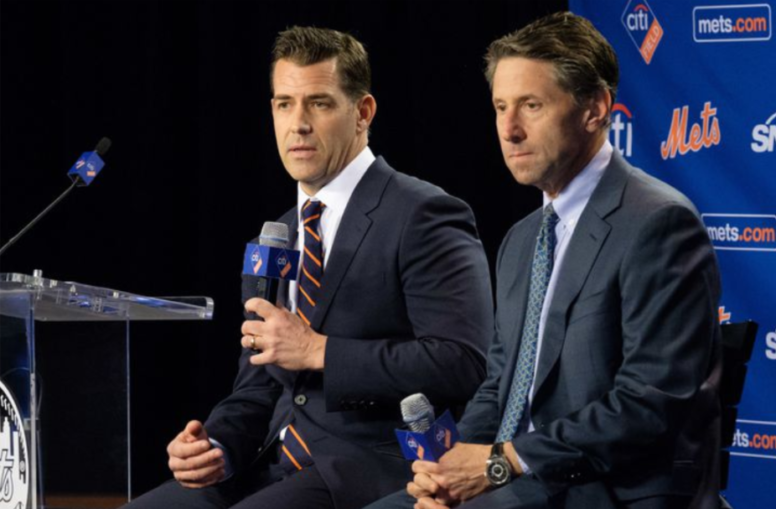
The New York Mets agreed to a settlement with Yoenis Cespedes on Friday night that stunned the baseball world as he took a significant salary cut as part of the agreement due to an impending hearing on the injury he sustained at his ranch.
As part of the agreement, Cespedes agreed to have his salary reduced from $29.5 million in 2020 to less than $10 million as detailed by Joel Sherman of the New York Post.
Now, the caveat is that Cespedes has bonuses that he can obtain in order to get his salary back to $20 million, but those have to be earned and currently do not count towards the luxury tax threshold.
As detailed by MMO’s own Christopher Soto, the Mets’ luxury tax payroll now stands at $186.7 million, which gives the Mets over $21 million to spend before exceeding it.
Now, if Cespedes were to earn all $10 million he can in bonuses and Michael Wacha earns all $7 million he has in incentives, the Mets would have only $4 million to spend.
While the team might choose to do that, it’s actually an absurd idea as Wacha’s incentives are largely based on starts (Associated Press) and as of now, the Mets have six pitchers for five spots in the starting rotation. Hence, there is no guarantee he is going to make 20 starts or more for the Mets, which is when they become more punitive.
As for Cespedes, he hasn’t played in a game since 2018 and is trying to come back from surgeries on both of his heels and a fractured right ankle.
With all of that being taken into account, it would be a complete miscalculation for the organization to act as if those incentives count towards the team’s luxury tax payroll.
Signing Rick Porcello and Michael Wacha might have addressed the gaping hole in the fifth spot of their starting rotation, but they have far from addressed all of their needs for the 2020 season.
The team has still not addressed their bullpen issue as simply keeping Seth Lugo and Robert Gsellman as relievers plus re-signing Brad Brach is not improving the bullpen. That is simply maintaining what the team already had going into next season.
On top of it, the team might want to add a backup catcher, a depth infielder, and maybe even still acquire a starting center fielder.
With over $21 million, the team could easily add a couple 0f mid-tier relievers and a backup catcher on a major league deal.
It’s possible that they still can’t acquire a starting-caliber center fielder but honestly, at this stage, that probably isn’t their most pressing need anyways given they already have Brandon Nimmo, Michael Conforto, J.D. Davis, Jake Marisnick, Dominic Smith, and maybe even Yoenis Cespedes as outfield options. Jeff McNeil can always move there in a pinch too.
The point is that if this organization truly wants to contend in 2020, they don’t have any excuses to not spend this offseason, especially now that they are not even that close to the $208 million luxury tax line anymore.
It certainly is interesting to wonder whether or not Brodie Van Wagenen’s decision to sign Porcello on Thursday to a one-year, $10 million contract the day after signing Wacha was related to knowledge of this impending new source of capital.
When the team signed Wacha on Wednesday, Van Wagenen made it sound like the team was done seeking significant rotation help and then the Mets agreed to a deal with Porcello less than 24 hours later.
Could the Wilpons just choose to pocket this cash? Absolutely and they haven’t exactly given people any reason to give them the benefit of the doubt.
With that being said, the public is now very much aware of just how much money the team has to spend this offseason and it would be very tough for them to evade using any of it to improve the team for the 2020 season.
Hopefully, Van Wagenen’s decision to bring in Porcello was a sign that the team plans to spend more this offseason than originally anticipated.














